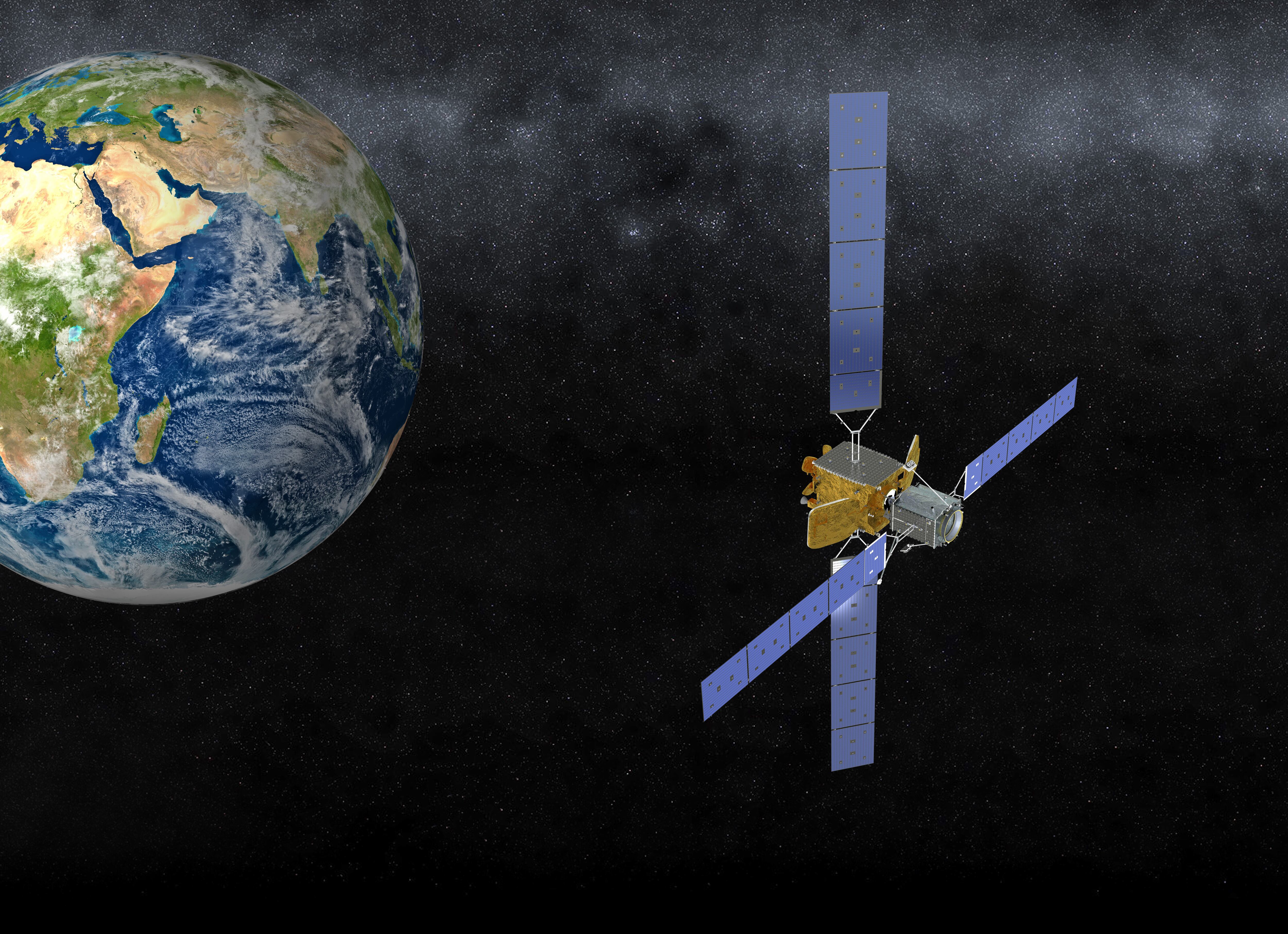An Intelsat satellite has successfully returned to operations following the first commercial docking of two spacecraft on orbit in February, according to a April 17 announcement.
The mission demonstrated a new satellite life extension service that the U.S. military is keenly interested in.
Intelsat is the first customer of SpaceLogistics, a wholly owned subsidiary of Northrop Grumman that is building a fleet of space vehicles that can dock with on orbit satellites, providing propulsion to extend the lives of fuel depleted spacecraft. The Department of Defense has already awarded the company a contract through the Space Enterprise Consortium to study whether it could service four national security satellites, and now the company is seeing increased interest from Department of Defense program offices Joe Anderson, vice president of operations and business development for SpaceLogistics, told C4ISRNET in a March interview.
RELATED

With the return of Intelsat 901 to operations, SpaceLogistics has shown that its Mission Extension Vehicle can dock with an on orbit satellite and transport it to a new orbit, giving the platform a new lease on life. In a press release, Intelsat said it “views life-extension services, like MEV technology, as a cost-effective and efficient way to minimize service disruptions, enhance the overall flexibility of its satellite fleet and better support the evolving needs of its customers.”
Launched in October, MEV-1 climbed to the geo graveyard — about 300 km above the geosynchrnous orbit —where it met Intelsat 901, a satellite that was nearing the end of its service life due to a lack of fuel. The two spacecraft joined together Feb. 25, marking the first docking of two on orbit commercial satellites. Following the successful docking, the now merged spacecraft moved higher to about 500 km above geosynchronous orbit, which Anderson said allowed the two to drift westward to their destination of 27.5 degree west longitude even faster. During that journey, Intelsat 901 slowly returned to its operational inclination.
Once in place at 332.5°E, Intelsat transitioned about 30 of its commercial and government customers to Intelsat 901 over a six hour period April 2. The company says the satellite is once again providing full service to its customers. MEV-1 will remain docked to Intelsat 901 for the next five years, providing any necessary propulsion, before taking it to a decommissioning orbit and moving on to its next client.
“We proved it out. We proved we could do this safely and everything performed the way we wanted,” said Anderson.
Anderson said the decision to dock in the geo graveyard was done out of a preponderance of caution, the next docking mission will take place within geosynchronous orbit. Moreover, the docking was so seamless that Andersaid said that Intelsat plans to keep their satellite in service throughout the next mission.
“We’ve had a number of customers who have been waiting to see this demonstration, to make sure that this would work before engaging much deeper. So they’re of course engaging with us,” said Anderson.
That includes increasing interest from the Department of Defense.
“On the government side, we’re continuing to see more interest, more awareness of this capability. I think the players are starting to really take this seriously. It’s now been proven. It’s real. We can do this. We need to start planning this into our architectures,” said Anderson. “I do see that sort of shift happening.”
The company has been working with the Space and Missile Systems Center on feasibility assessments on four service life extension missions for national security satellites they had identified.
Beyond that, Anderson said the company is working with multiple Department of Defense organizations to look at the possibility of on orbit assembly and manufacturing for the armed forces.
“With this success, I think those program offices are taking another look,” he said.
Meanwhile, SpaceLogistics was selected by the Defense Advanced Research Projects Agency to be its commercial partner on the agency’s Robotic Servicing of Geosynchronous Satellites (RSGS) program, the organization’s effort to put a robotic arm on a commercial spacecraft capable of performing repairs, augmentation, assembly, inspection or relocation of other spacecraft. SpaceLogistics was working on its own Mission Robotic Vehicle with a robotic arm prior to the selection, which was announced March 4.
“The RSGS opportunity to have access to a different set of robotics capability — a robotic capability that DARPA has been developing for over 10 years,” said Anderson, who said it was more robust than the robotics the company was originally planning to use. “It does reduce our technical risks and our schedule risks, somewhat.”
Engineers will now modify the vehicle slightly to incorporate the robotic arms provided by DARPA. And instead of a single arm, the vehicle will now sport two robotic appendages, extending its capabilities.
The MRV will play a key role in the deployment of the next generation of SpaceLogistics’ products — the Mission Extension Pods. Like the MEV, the pods will extend the service life of a satellite by supplementing the client’s fuel with its own. The MEP will be installed on customer’s satellites using the MRV’s robotic arm. Each pod should be able to provide six years worth of fuel. SpaceLogistics told C4ISRNET the company already had three agreements lined up for pods in the 2024 time frame.
The launch of a second vehicle, intended to provide the same life extension services for Intelsat 1002, was slated for this spring, but it has been delayed since Arianespace shut down of the launch center in French Guiana due to the COVID-19 situation.
Nathan Strout covers space, unmanned and intelligence systems for C4ISRNET.








